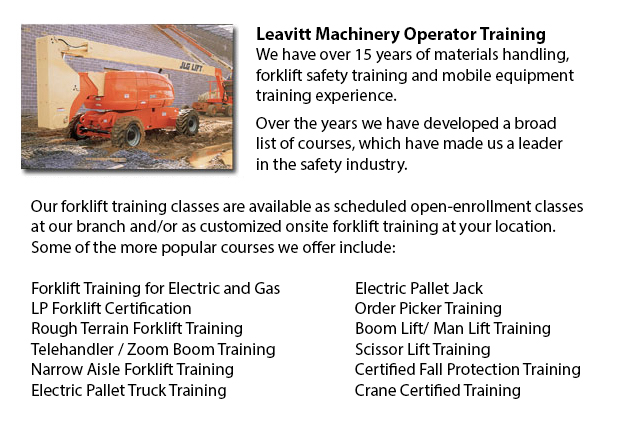
Kamloops Boom Lift Safey Training - Boom lifts fall under the type of elevated work platform or aerial lifting device. Most normally used in industry, warehousing and construction; the boom lift is so versatile that it can be utilized in practically any environment.
Elevated work platforms enable personnel to access work areas that will be inaccessible otherwise. There is inherent risk in the operation of these devices. Employees who operate them must be trained in the correct operating methods. Avoiding accidents is vital.
Boom Lift Training Programs cover the safety aspects involved in boom lift operation. The program is best for those who operate self-propelled elevated work platforms and self-propelled boom supported elevated work platforms. Upon successful completion of the course, Individuals who participated would be issued a certificate by someone qualified to confirm completing a hands-on assessment.
Industry agencies, federal and local regulators, and lift manufacturers all play a role in providing information and establishing standards to be able to help train operators in the safe utilization of elevated work platforms. The most important ways in avoiding accidents connected to the utilization of elevated work platforms are the following: checking equipment, putting on safety gear and conducting site assessment.
Vital safety considerations when operating Boom lifts:
Operators need to observe the minimum safe approach distance (MSAD) from power lines. Voltage could arc across the air to be able to find an easy path to ground.
In order to maintain stability as the platform nears the ground, a telescopic boom has to be retracted prior to lowering a work platform.
Boom lift workers should tie off to ensure their safety. The harness and lanyard apparatus must be connected to manufacturer provided anchorage, and never to other wires or poles. Tying off may or may not be needed in scissor lifts, depending on specific employer guidelines, job risks or local regulations.
Avoid working on a slope that exceeds the maximum slope rating as specified by the manufacturer. If the slop exceeds requirements, then the machinery must be transported or winched over the slope. A grade can be simply measured by laying a minimum 3-feet long straight board or edge on the slope. After that a carpenter's level can be laid on the straight edge and the end raised until it is level. The percent slope is obtained by measuring the distance to the ground (the rise) and then dividing the rise by the length of the straight edge. Afterward multiply by one hundred.
-
Kamloops Counterbalance Forklift Training
Kamloops Counterbalance Forklift Training - Counterbalance Forklift Training courses are always in high demand. The Counterbalance forklift is a forklift which is made with a weight which counters the balance, equally spreading the weight of the load... More -
Kamloops Manlift Certification
Kamloops Manlift Certification - The Manlifts and Elevated Platforms program offers training on the rules, regulations and proper application of safe operating measures and work practices included in daily activities for people who work making use of... More -
Kamloops Boom Lift Training
Kamloops Boom Lift Training - Elevated work platforms, likewise referred to as aerial platforms, allow workers to carry out tasks at heights that will otherwise be not reachable. There are various styles of lifts designed for different site applicati... More -
Operator Safety Certification | Re-Qualification Certification | In-House Instructor Certification in Kamloops
Forklifts are used in just about all industrial construction sites and in warehouse operations and in boat yards. The reach feature of a lift truck is a vital component used in several applications like for instance when a shelving system is being us... More -
Kamloops Manlift Safety Training
Kamloops Manlift Safety Training - It is essential for competent Manlift operators to be aware of the connected dangers that come with particular kinds of scissor lifts. They must be able to operate the scissor lift in a way that protects not only th... More -
Kamloops Crane Training Schools
Kamloops Crane Training Schools - We have designed several programs for Mobile Crane Operation at our Crane Training Schools. These programs are recommended for the experienced operator who requires certification or re-certification, and for inexperi... More -
Skid Steer Loader Certification in Kamloops
The engine powered skid-steer loader consists of a rigid and small frame, outfitted together with lift arms which could attach to a lot of industrial attachments and tools to perform several labor saving jobs. Typically, skid-steer loaders are four-w... More -
Kamloops Heavy Equipment License
Kamloops Heavy Equipment License - A heavy equipment license could be acquired by taking a certification and preparation course at a private training school or a vocational school. This license would qualify you to operate various types of heavy mach... More

Forklift Certification Kamloops
TOLL FREE: 1-888-254-6157
Kamloops, British Columbia
forkliftcertificationkamloops.com/
Email Us
About Us


